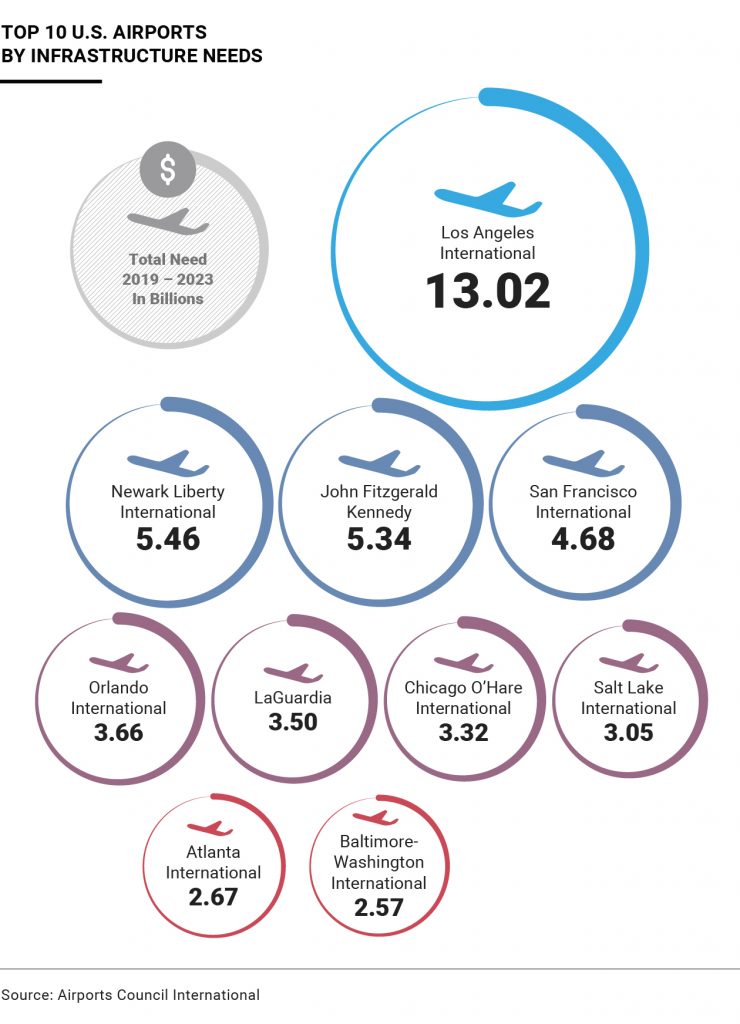
Los Angeles, the city of the smoggy freeway, is investing in sustainable mobility to reach its airport. At the Los Angeles International Airport, the LINXS consortium broke ground last month on construction of an automated light railway, or people mover, to connect the terminals at the world’s fourth busiest airport through which 30 million people pass each year.
The project will cost the Los Angeles airport $5 billion, of which $2 billion will cover the design and build stage. The rest will be collected by LINXS consortium of international construction firms over the next 25 years for management and maintenance. The project will be finished by 2023, according to local press reports.
Los Angeles and its airport
The automated people mover will transform mobility inside the airport, but that’s just the start. The new line will intersect with the upcoming Crenshaw/LAX public transport line, the light railway currently under construction that will cut through the city from north to south connecting Los Angeles with its airport. The Los Angeles County Metropolitan Transportation Authority, which finances the construction, plans for the new line to be up and running in 2020. It will be a strategic tool to develop sustainable mobility for traffic-clogged Los Angeles precisely because of the fast connection that it will guarantee from the city to the airport.
«We cannot have a truly world-class airport», said Los Angeles Mayor Eric Garcetti at the start-up ceremony of construction on the airport people mover, «until we have public transport that brings people right up to the terminals».
That system will help transform LAX into one of the most modern and interconnected airports in the world.

Ambitious goals for LAX
In addition to being the most expensive infrastructure project undertaken at a US airport for the next five years, the new people mover is part of a larger multi-billion plan to completely remake the Los Angeles airport. According to the “Construction Dive” sector website, the airport is spending $14 billion to modernize its facilities, including a series of expansion projects. Among these are the construction of new American Airlines terminal (a $1.6 billion investment), the new Delta terminal ($1.8 billion), and the construction of the Midfield Satellite Concourse, an underground tunnel over 300 meters long which will link 12 gates to the Tom Bradley International Terminal and which will cost $1.6 billion to build.
US airports need more investments
Los Angeles is certainly a prime example of how major US airports are investing in massive renewal schemes. Something similar is happening in New York City, where both JFK and LaGuardia are at the center of renovation projects, but also in Ohio, where the John Glenn Columbus International Airport has invested several billion dollars, and at the San Francisco International Airport in California. But airports need to spend more, according to the latest report of the Airport Council International (ACI, the trade association of the world’s main airport operators). The ACI analyzed the state of health of US and Canadian airports and concluded that investments of an estimated $128.1 billion ($25.6 billion annually) are needed over the next five years.
Airports need both modernization for their ageing terminals and better transport infrastructure, the Airport Council International said, both within the airport and to connect them to the cities they serve. Finding the necessary funds is never easy. The ACI’s proposal is to raise the Passenger Facility Charge tax used to finance the airports from the current $4.50 per flight ticket.
Airports are a strategic transport infrastructure for the United States. In one year, according to ACI’s 2019 report, an average of 1.7 billion passengers move through American airports, which in turn employ 11.5 million people with an economic impact of $1.4 trillion.

